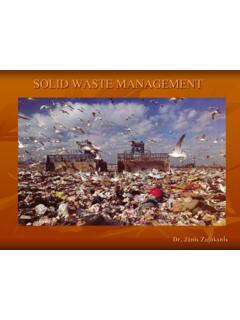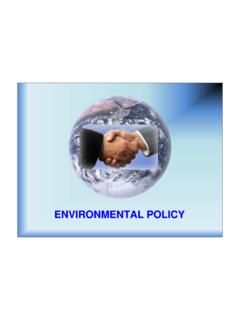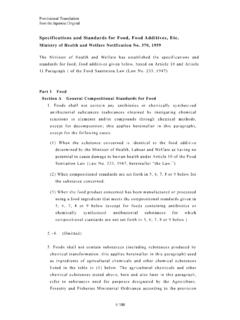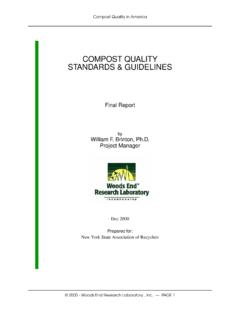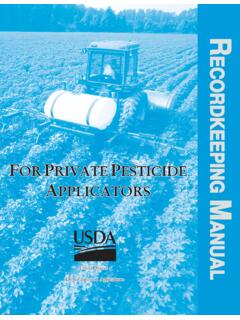Transcription of ENVIRONMENTAL POLLUTION
1 ENVIRONMENTAL POLLUTIONENVIRONMENTAL POLLUTIONA ssoc. prof. J nis Za oksnisAssoc. prof. J nis Za oksnisEnvironmental POLLUTION and degradation can be caused by chemical substances, physical factors or the development ofundesirable living past, present and potential global threat of ENVIRONMENTAL POLLUTION and degradation is one of the main factors that has an effect on the formation of society s PEOPLE ENVIRONMENT ENVIRONMENT -- POLLUTION POLLUTION 2 ENVIRONMENTAL degradationmeans that the environment becomes unusable for its designed purposes or that the development of living organisms and their communities in the environment is any substance released into the environment as a result of human activity or natural processes that has an adverse impact on living on the Earth is fragile.
2 And every living being can Life on the Earth is fragile, and every living being can continue to live only in the ENVIRONMENTAL conditions continue to live only in the ENVIRONMENTAL conditions optimal for its for its which can influence living organisms and life itself:Natural factorsAnthropogenic factors3 Riseor fall of temperature above or below the optimumIntensive flow of electromagnetic radiationChemical substancesDepletion of needed nutrientsAny chemical , biological or physical factor is called toxicif it causes an adverse biological reaction. Different substances or factors have differenteffects:4differenteffects:Chemi calsBiological factorsPollutants, for example, factorsRiseor fall of of the undesirableliving the case of ENVIRONMENTAL degradation.
3 Creation of the unfavourable conditions for living organismslimits for development of the organisms and their communitiesENVIRONMENTAL DEGRADATIONENVIRONMENTAL DEGRADATION5 ENVIRONMENTAL degradation as a soil erosionEnvironmental degradation as a soil erosiondue to overdue to over--grazinggrazingPollution of the environment by chemical substances can be classified depending on the properties and structure of these substances. ENVIRONMENTAL contamination with metals or their compounds (Cu, Pb, Co, Hg and others) and toxic trace elements (F, B, As, Se and others) can be marked out IrritantFlammable DANGEROUS DANGEROUS chemical SUBSTANCESCHEMICAL SUBSTANCES6 Oxidizing agentsIrritant(kairino s)Flammable substancesToxic substancesHarmful for environmentCorrosivemordantExplosivesDan gerous Substances Directive 67/548/EECP roduced by synthesis or as by-Toxic substances.
4 Naturally occurringHuman-made (xenobiotic)Plant s toxins, Toxic substancesToxic substances7 Produced by synthesis or as by-products in the process ofproduction of other s toxins, poisonsAll toxic substances are hazardous, but not all hazardous substances are :Metals and their compoundsToxic micro-elementsOrganic pollutantsChemically inert compounds in a state of fine particles can also contaminate the environmentCu, Pb, Co, Hg F, B, As, Se , industrial by-productsdust and aerosols in the air and suspensions in water8Co, Hg POLLUTION with POP s :by destruction of the by use pesticides and by industrial ( chemical ) The ENVIRONMENTAL POLLUTION threat increases if theorganic substances that have been released into the environment are persistent (Persistent Organic Pollutants POP), , if they remain there for a long period of time(even several decades in the soil).
5 Persistent Organic PollutantsPersistent Organic Pollutantsby destruction of the products, used in householdsby use pesticides and other plant s protection chemicalsby industrial ( chemical ) production9 POP s are pesticide DDT, dioxins, polychlorinated biphenyls and kinds of chemical compounds are increasinglyreleased into the environmentapproximately 10 million known chemical substances, and a large part of them do not exist in the natural environmentCHEMICAL COMPOUNDS IN THE ENVIRONMENTCHEMICAL COMPOUNDS IN THE ENVIRONMENT10not exist in the natural environmentapproximately 120 000 industrially produced chemical compoundswidely used and 10 000 substances produced in the amounts exceeding 500 kg per yearthe number of types of industrially produced substances is increasing from approximately one to three thousand new ones every yearRegistration, Evaluation, Authorisation and Restriction of Chemicals(EC)
6 No 1907/2006 REACHREACH is a EU Regulation of 18 December 2006. REACH addresses the production and use of chemical substances, and their potential impacts on both human health and the environment. Its 849 pages took seven years to pass, and it has been described as the most complex legislation in the Union's history and the most important in 20 is the strictest law to date regulating chemical substances and will affect industries throughout the world. REACH requirement is to communicate information on chemicals up and down the supply chain. This ensures that manufacturers, importers and also their customers are aware of information relating to health and safety of the products supplied.
7 For many retailers (mazumtirgot js) the obligation to provide information about substances in their products within 45 days of receipt of a request from a consumer is particularly challenging. Having detailed 11 European Chemicals Agency headquartersin Annankatu, European Chemicals Agency has set three major deadlines for registration of chemicals. In general these are determined by tonnage manufactured or imported, with 1000 tonnes/a. being required to be registered by 1 December 2010, 100 tonnes/a. by 1 June 2013 and 1 tonne/a. by 1 June addition, chemicals of higher concern or toxicity also have to meet the 2010 products within 45 days of receipt of a request from a consumer is particularly challenging.
8 Having detailed information on the substances present in their products will allow retailers to work with the manufacturing base to substitute or remove potentially harmful substances from products. The list of harmful substances is continuously growing and requires organizations to constantly monitor any announcements and additions to the REACH scope. This can be done on the European Chemicals Agency 's is the science of chemical elements and compoundsChemistry is the science of chemical elements and compoundsVolatile Organic Compound (VOC)Emission Sources:Paints Varnishes (lakas)Moth balls (ko u tabletes)Solvents Gasoline Newspaper Cooking Cleaning chemicals Vinyl fluors 12 Vinyl fluors Carpets Photocopying Upholstery (polsteri) fabrics Adhesives (l mvielas)Sealing caulks (tepe) Cosmetics Airf fresheners Fuel oil Vehicle exhaust Pressed wood furniture Tobacco smokeVOC by products.
9 BenzeneToluene Methylene chloride Formaldehyde Xylene Ethylene glycol Texanol 1,3-butadieneEnvironment degradation factors :Physical factorsBiological factorsThe quality of the environmentThe quality of the environment13 electromagnetic radiation noise POLLUTION thermal POLLUTION infectious agents parasites living organisms whose metabolism or decay products are harmful to humans or other living organismsAir is one of the essential factors making life on the Earth possible. Depending on the body constitution, a human being consumes 6 13 cubic metres of air daily or even more in cases of heavy physical loads.
10 Consequently, trace amounts of harmful substances in the air may have an adverse effect on the human POLLUTIONAIR POLLUTION14adverse effect on the human spread rapidly and to far distances in the atmosphere; therefore, the problem of atmospheric POLLUTION should be dealt with on a global scale, and international cooperation is vital in this regard. Air cleanness in dwelling premises and working environment is a special air POLLUTION problem because today people become increasingly exposed to hazardous and toxic substances at home or POLLUTION mostly occurs in the industrially developed regions of North America, Europe and main sources of anthropogenicpollution that also affect the quality of air are :agricultureSOURCES OF ANTHROPOGENICSOURCES OF ANTHROPOGENICPOLLUTION OF AIRPOLLUTION OF AIR15transportindustrial productionenergy production, heatingTHE MAIN AIRTHE MAIN AIRPOLLUTANTS POLLUTANTS ARE.
